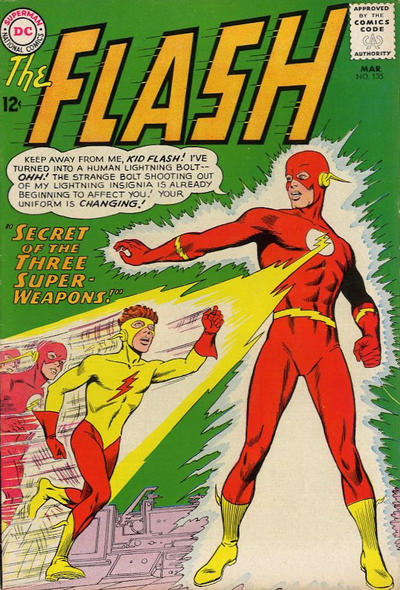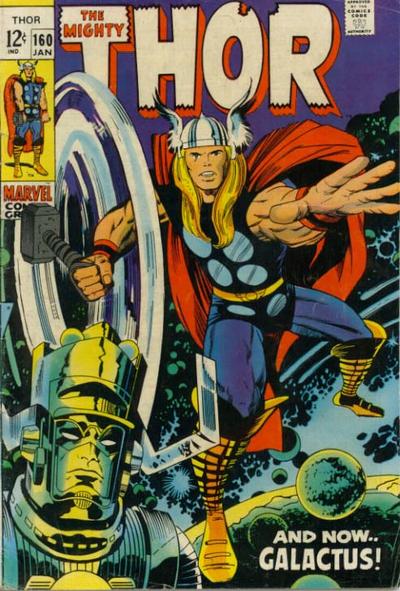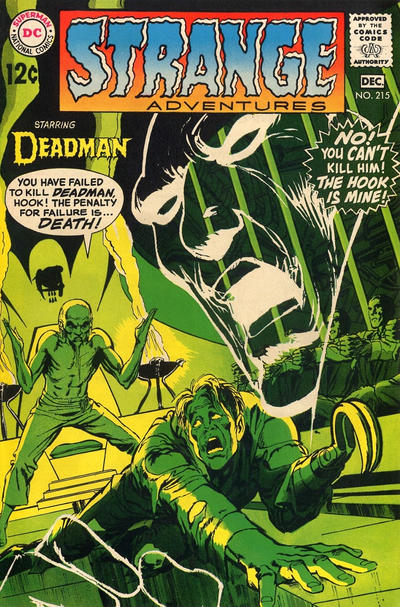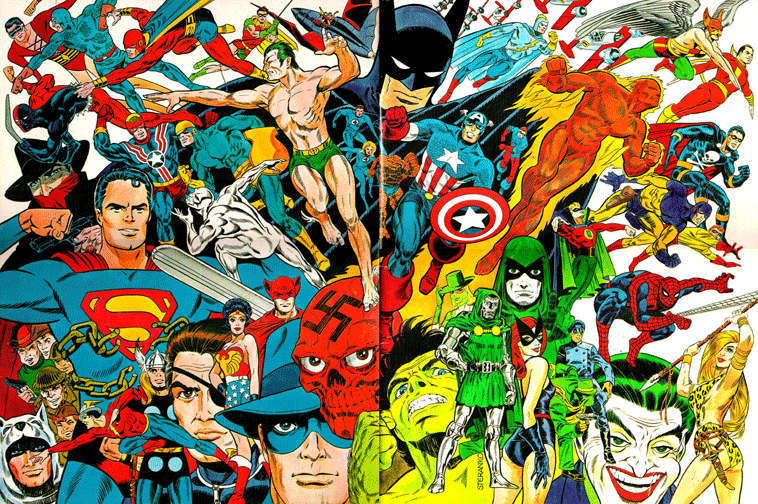As Arlen’s lecture series gets ready for its third week, we asked him a question for which there’s no shortage of arguments.
Namely: Who are the five most important comics artists since 1960 — and why.
Sayeth the historian: “Man, there have been so many, it’s tough to pick just 5! In no particular order”:
(Cover pix are my own selections and are just great examples of the artist’s work. — Dan)
Let the arguments begin!
1. Carmine Infantino. He personified DC’s Silver Age look (against Kirby doing the same at Marvel), and was the first artist to helm a comic-book company when he took over at DC in the fall of ’67, leading the company into a creative utopian period until about 1974.
2. Jack Kirby. What can one say about the man dubbed “The King” that hasn’t been said? His exaggerated, hyperbolic, in-your-face drawing style was so powerful, his characters so creative and important, his stories mind-boggling cosmic epics. He pretty much single-handedly got an underdog, scrappy company, Marvel Comics, to eventually triumph over the industry’s monolithic leader, DC Comics — the Rocky Balboa of comics history!
3. Joe Kubert. A giant in the medium, whose expressive, emotional style, and the aggressive, stylized brush & pen marks that made it, are unique in the history of comics, and the history of art itself. In addition, his school has turned out a generation of new comics greats, and Kubert’s works at the later stage of his life & career were as impactful as his earlier works.
4. Neal Adams. The greatest realistic mainstream superhero artist in comics history, whose groundbreaking inking style alone makes him one of the medium’s greatest inkers as well. His impact was as great as Jack Kirby’s, but on the opposite end of the drawing spectrum.
5. Jim Steranko. A renaissance man — artist, writer, graphic designer — whose impact and influence on generations of comic artists who’ve followed are in direct, inverse proportion to the relatively small quantity of comics he produced from ’67-’70. He was the Jimi Hendrix of comics!






May 19, 2014
No arguments from me, that’s for sure (though Steranko was one I had to appreciate in retrospect, not being much of a Marvel reader during the ’60s). And if this list was to expand beyond 5, I’d vote Russ Manning in at #6…
May 19, 2014
Carmine? No! He had good inkers that helped him look good. I would replace him with Murphy Anderson, Curt Swan, Steve Ditko, Wally Wood or Dick Dillon any day of the week.
May 20, 2014
The only inker who made Infantino look good wa sInfantino.
May 19, 2014
I would swap Kubert for Gil Kane. He was, along with Infantino, the personification of DC’s Silver Age with his work on Green Lantern and The Atom. Then he went to Marvel and became a pivotal artist on many titles such as Amazing Spîder-Man and Captain Marvel, and also drew and designed a veritable ton of covers there during the 70s. In many regards this made him the most visible Marvel artist for many years. He also pioneered the graphic novel concept with His Name Is Savage and Blackmark. Kane also did significant work for Tower’s THUNDER Agents, and started his lengthy career way back in the golden age. Add his collaboration with Ron Goulart on the newspaper strip Star Hawks, and I think he deserves a place in the top five.
May 19, 2014
I agree 200%!!! All true giants in the Silver Age & Bronze Ages!
May 20, 2014
In the past fifty years?
Keep Kirby, who influenced almost every superhero artist since. Demote the rest.
Replace with:
Will Eisner, who innovated after The Spirit. The School of Visual Arts. His textbooks (before McCloud). A Contact With God. Two awards in his name, both of which he actively supported.
Charles Schulz. Peanuts hit cruising speed in the 60s and 70s. His characters were ubiquitous, but he controlled everything. The collections influenced counties cartoonists, showing that an intelligent strip could find a popular market.
Randall Munroe. He is pioneering and innovating via his webcomic, XKCD.
R. Crumb. Underground cartoonist. Then art cartoonist. Then literary cartoonist.
Bill Mauldin. I believe he was at the forefront of critical editorial cartooning, along with Herblock. He critiqued society, not just politics.
Then there’s Moebius. Gary Panter and Art Spiegelman. Bill Watterson and Gary Larson. MAD Magazine and National Lampoon. Chris Ware. Michael Golden.
May 20, 2014
Arlen is on point with all of these choices – my only minor complaint is that for the Jack Kirby image – the inks are by Vince Colletta 🙂 – all due respect to Vince and his work, but in my opinion he should not have been allowed in the same room with a penciled Kirby page – I would have chosen this image (Not even sure if Arlen chose that image) – but aside from that, I never tire from reading the insights of Arlen on the comic book genre.
http://www.johngandour.com/john_g/JACK_KIRBY_CAP_112_1969.jpg
May 20, 2014
I actually chose the image — and I knew the Colletta inking would rile people. But I wanted to pick covers that aren’t the same ones we see over and over. — Dan
May 20, 2014
Just a preference – no big deal – enjoyed the other selections very much – keep up the great work, Dan.
May 20, 2014
Where’s Will Eisner? Jack Davis?
May 20, 2014
Curt Swan
Steve Ditko
Gil Kane
May 20, 2014
I’d like to see more recent artists like John Byrne, George Perez, Todd Macfarlane, Frank Miller or Jim Lee considered. Maybe that’s the list for influential artists since the Seventies?!
May 20, 2014
That’s a good idea, Todd. Hmmm.